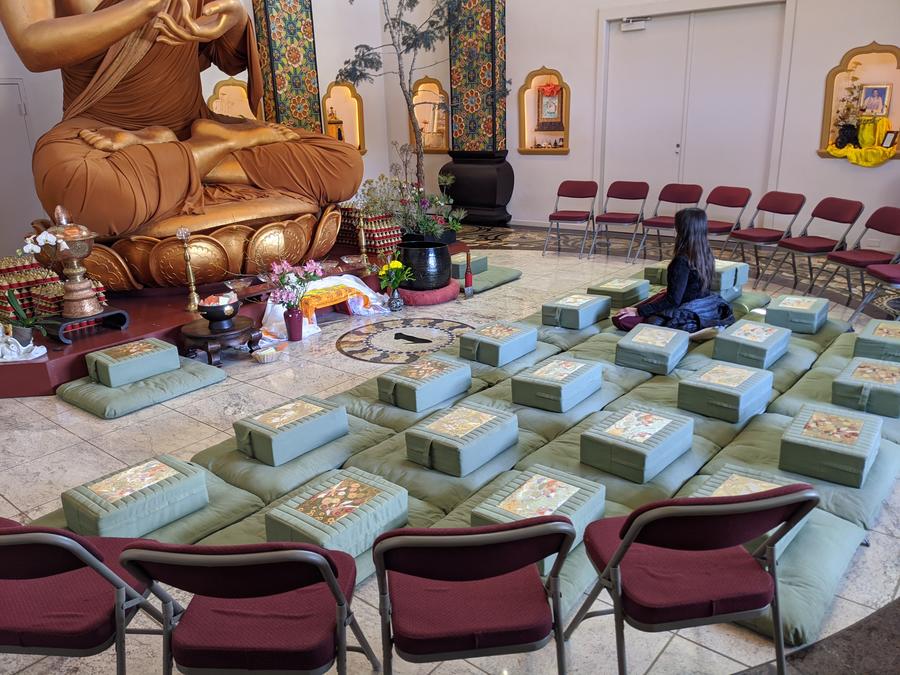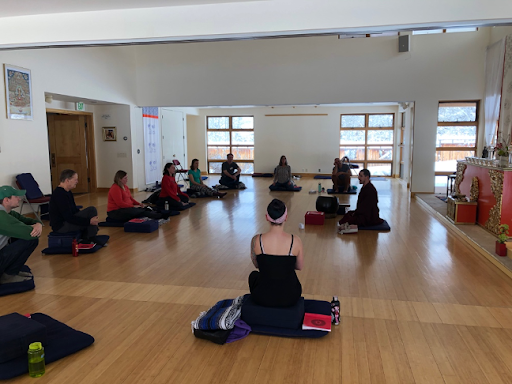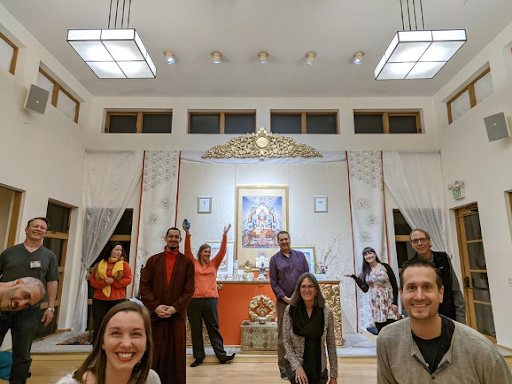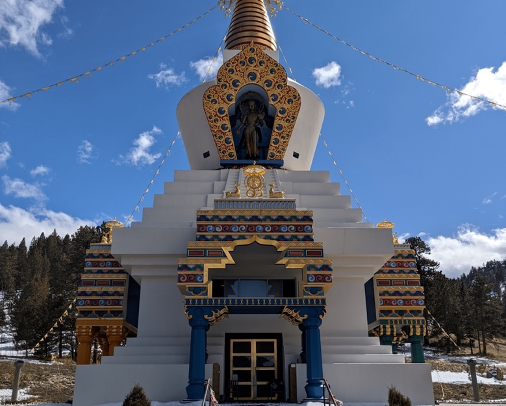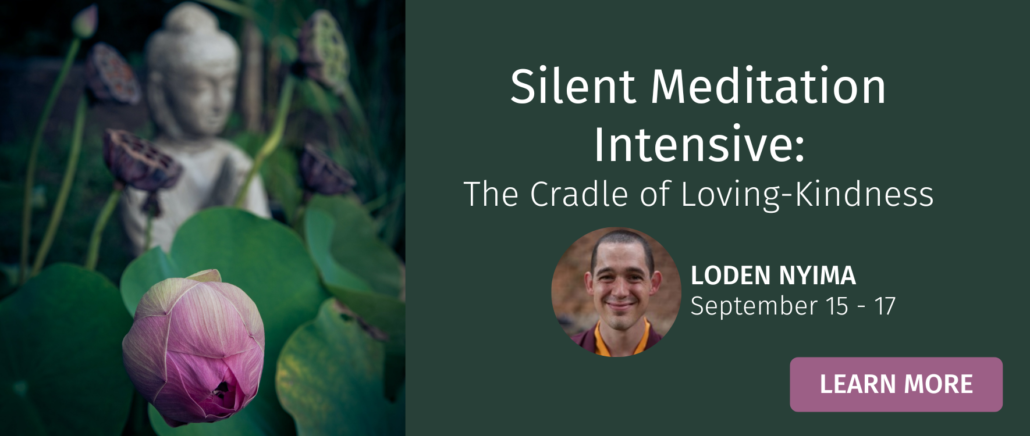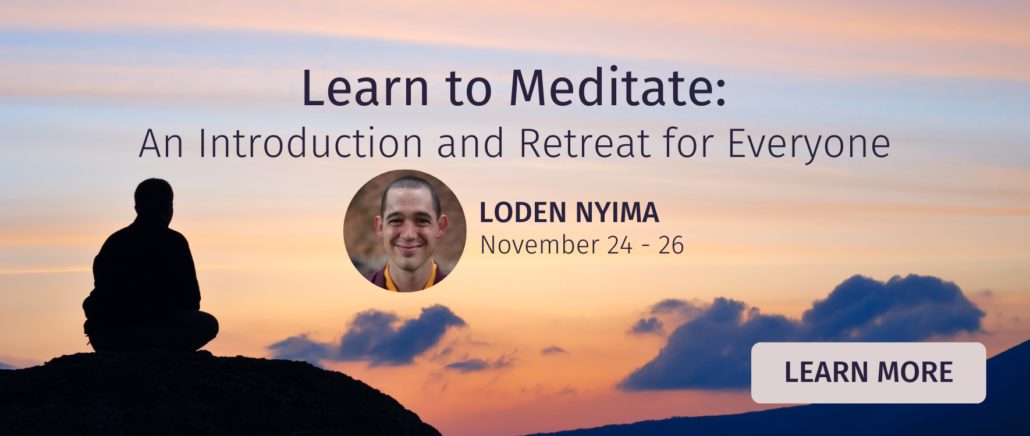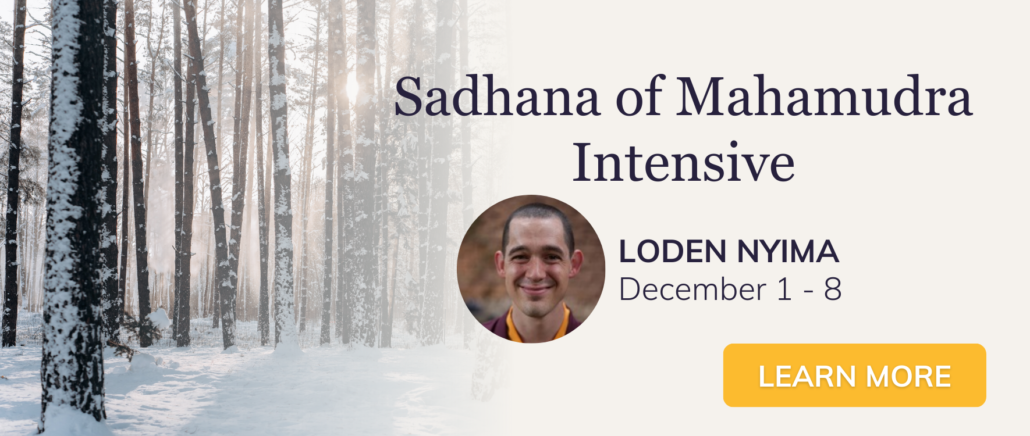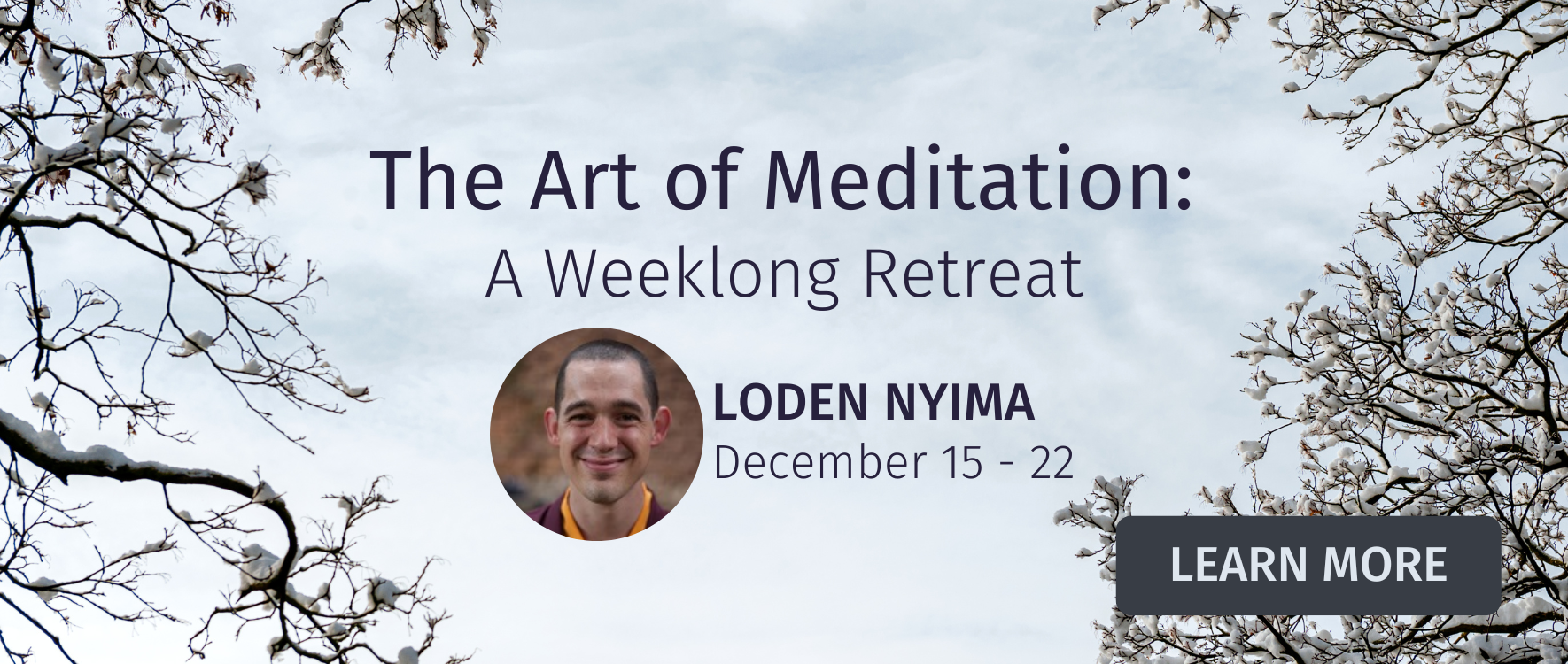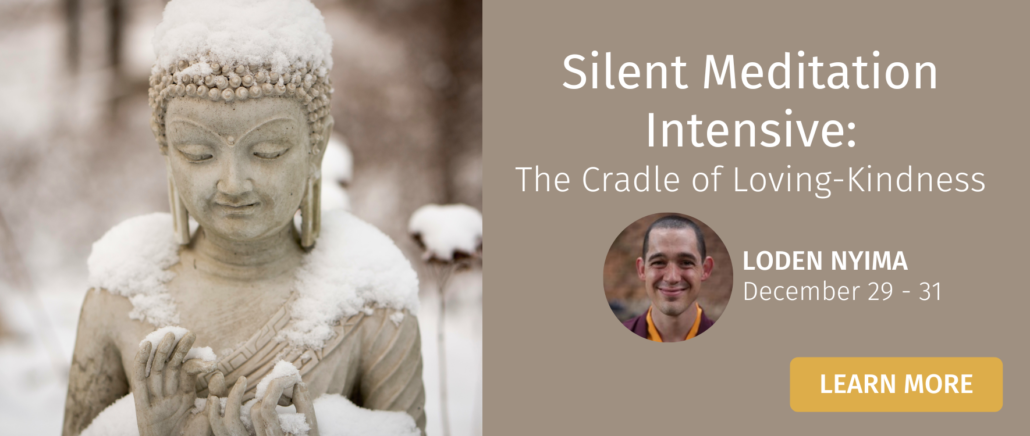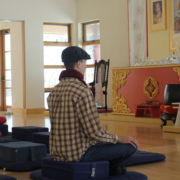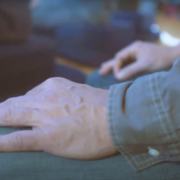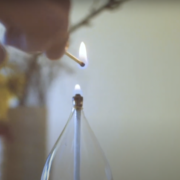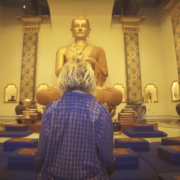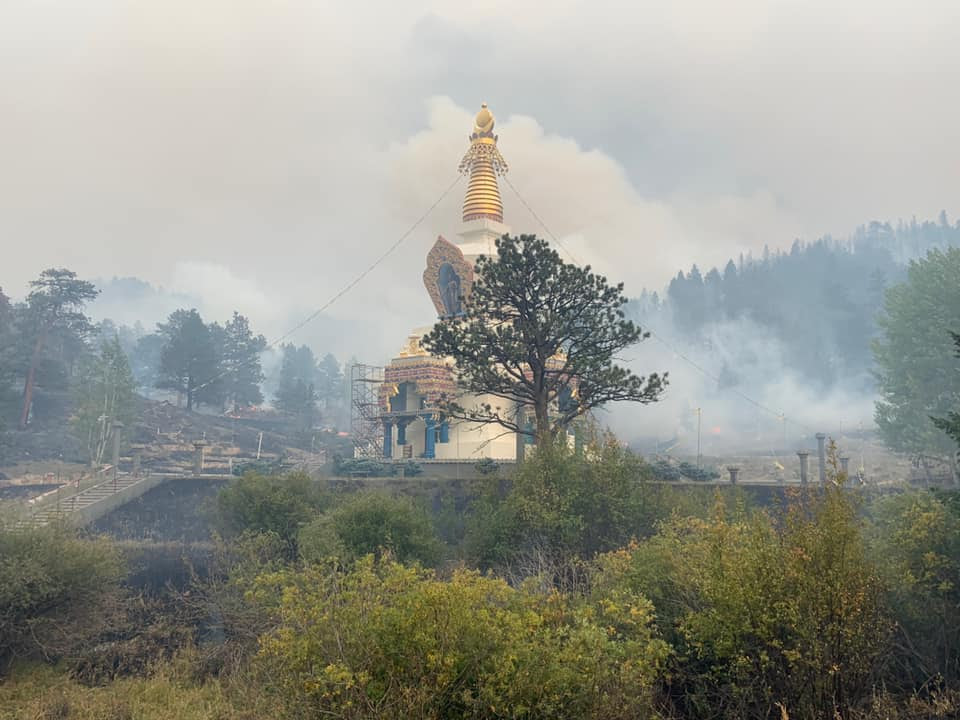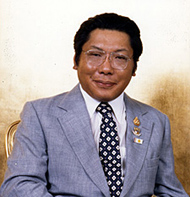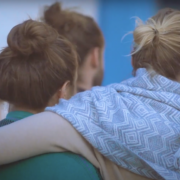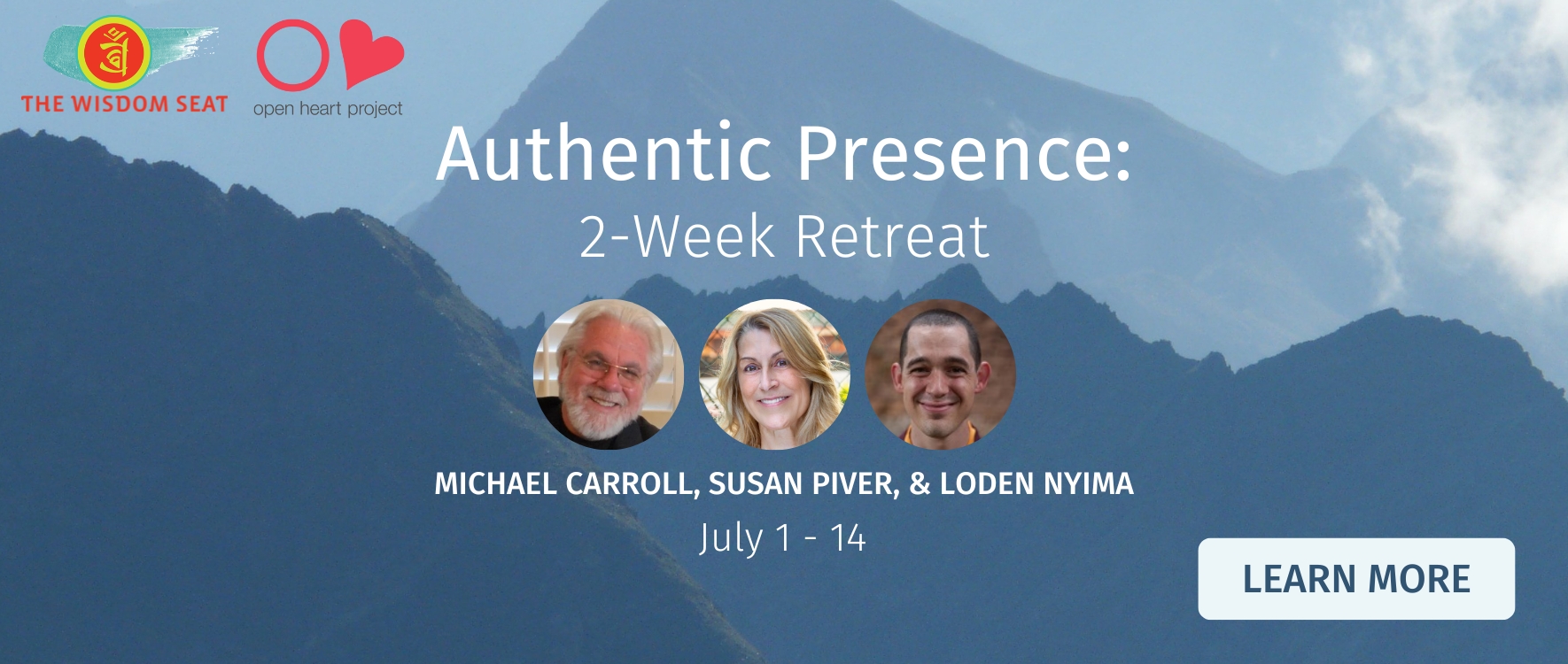How Will We Meet this Moment?
By Gelong Loden Nyima
Chögyam Trungpa Rinpoche passed away into parinirvana when I was nine months old. I never met him but have felt my path—like that of thousands—has been occurring in the wake of his. I practiced at places he founded, was taught and trained to teach in his lineage, and now live at Shambhala Mountain Center in a cabin on the aptly named “Stupa View” which sits in the valley beneath his Great Stupa of Dharmakaya.
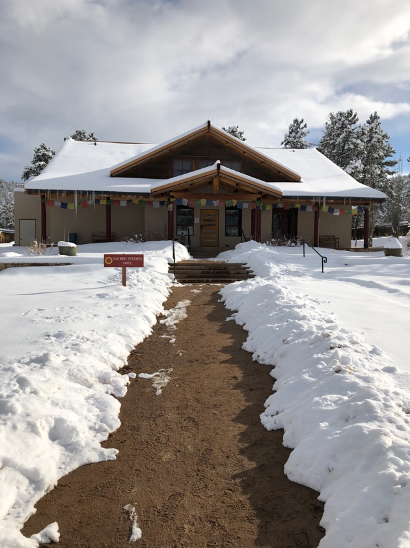
The Buddhist tradition identifies the age we’re living in as broadly fortunate because teachings leading to enlightenment are alive and available, yet also troubled as it is a time when the mass amalgamations of actions arising from greed, aggression, and willful ignorance ripen into social and global occurrences of resource depletion, conflict, and pandemic illness.
Much of what we now know to be occurring, and what experts on climate change and public health expect for the future, has also been forecast in Buddhism for millennia based on this understanding of cause and effect. Similar to and largely concurrent with what we’re hearing from these scientists, Buddhist thought predicts things to get worse and then get better in the very long run—the immediate direction and pace of transition depending upon our actions now. However, the ultimate impetus of Buddhism is that we can find natural freedom from the entire cycle at any moment by looking within to the origin itself. To the extent we do this, we can help others to as well.
It is difficult to overstate the degree to which Trungpa Rinpoche was urgently aware of and responsive to these issues and their imminent intensification in the decades to follow his life. His Shambhala teachings arose in dynamic relationship with these difficulties, offering a path of spiritual warriorship in service of a society more true to our basically good nature. These teachings look the state of the world in the eye and describe “plague, famine, and war,” but more importantly, from the heart, they encourage a responsive path of compassion, bravery, and sanity based upon trust in the unwavering confidence of basic goodness and the naturally ensuing longing to help.
In particular, he aspired that the Shambhala community could manifest these teachings and provide refuge and training through chaotic times. He called it “enlightened society.” Trungpa Rinpoche was a person who survived and escaped a genocide and proceeded to establish an international community of meditation centers. He meant what he said. He understood the power of the mind and believed in the power of community. His own life’s journey and work was proof that it was possible, but even more so a poignant and urgent invitation to each of us to practice and to help. We do so knowing that we’re a drop in the ocean, but that every drop counts.
As a practitioner of this tradition, I was saddened and concerned—but not surprised—when a few weeks ago my solitary winter meditation retreat was interrupted by a message from our Executive Director asking if I would come out to teach a Weekthun (week-long meditation retreat) beginning in two days. The regularly scheduled teacher couldn’t travel due to the COVID-19 pandemic reaching American soil and disrupting life as usual.
We expected that about half of the registered participants would similarly need to cancel but wanted to offer the retreat for those who could safely attend. We were confident we could do so within the parameters being advised by health authorities at the time: everyone sitting 6-8 feet apart, frequent hand-washing and sanitation, meals prepared and served by a kitchen staff attentively following evolving guidelines.
Our Weekthun began with a circle of twelve people describing what had brought us to meditation practice and to this retreat. The motivations included a combination of suffering and inspiration—reflecting a natural wisdom and compassion which longs to come out and has led us to practice. We began to meditate together for several days in a relatively ordinary fashion, knowing that what has brought us here is ultimately what we seek to connect with, open to, and trust—first in ourselves, and gradually, naturally, seamlessly, in everyone and everything.
In meditation, we learn to unconditionally welcome and breathe with everything in our experience, both painful and pleasant, remaining intuitively present and allowing it to unfold into natural, wakeful freedom. This is a process of trusting ourselves enough to feel what we feel, knowing that as we do, whatever painful stuckness we experience can unfold into the wisdom and compassion of our shared nature. The bravery and vulnerability to allow and remain present through this process is the alchemical medicine, because freedom lies nowhere else but in the nature of present experience. As Trungpa Rinpoche said, “include, include, include” and “the only way out is in.” Our discussions focused on this art and journey.
News about the worsening pandemic increased, and halfway through our retreat we learned that it would be the last program at SMC for at least two months as the land would be closing in order to respect guidelines prohibiting gatherings and to protect the most vulnerable among us. With the land sheltering into place around us, and the participants mainly being local, everyone decided to stay and to continue our practice until the end of the week.
Our group discussions turned to the role of meditation practice within the pandemic. Practitioners shared experiences of feeling fear, anxiety, and uncertainty—yet being able to hold these feelings and the reality they arise from within accepting, loving, mindfulness rather than collapsing into overwhelm, freezing into inaction, or exiting into distraction or anger. From this, practitioners described feeling compassion and inspiration to re-enter the world from a place of sanity rather than paranoia and competitive aggression.
One person said “there will always be helpers in a situation like this, and we have to look for and honor the helpers and we have to be helpers however we can, even if it’s as simple as being kind to the people around us.”
We shared feelings of tremendous appreciation for our practice allowing us these tools and the opportunity to train this way with each other and within a safe, sacred environment. But as well, we shared the poignant awareness that this privilege and good fortune was occurring while lives were being lost, economies damaged, and infections only continuing to spread. Eventually it would be someone we know, it would be our own job, it might even be ourselves. Less privileged people and communities would have less access to essential resources and would be less safe as a result. For ourselves we can practice, but from that, how can we help?
Despite SMC staff wondering how life would unfold in a center without program revenue and a community without income, everyone continued to show up and support the retreat and each other. Tears were shed, feelings were shared, essential work continued, contingency planning engaged in full force, and there was a feeling of being in it together. Each day we continued to find out what that meant as we prepared to shelter-in-place for the coming months, traveling staffers returned home to quarantine, and meals began to be served take-out style. And each day, Weekthun practitioners continued to sit and to practice.
Now that the Weekthun has concluded there are no hosted programs on land and the SMC community is sheltered-in-place. Teachings and meetings are occurring via Zoom calls to respect social distancing guidelines. Many here are continuing to practice and to contemplate not only how we can survive but more importantly what we can offer and how we can help during this time. We’re safe, we’re fed, and we’re sheltered in a profoundly sacred place.
Just before sitting down to write this article I did my evening practice and made offerings to the dharma protectors. When I open my door, I see Trungpa Rinpoche’s Great Stupa of Dharmakaya. It’s presiding over the land as if he’s watching. It feels almost as though it’s been waiting all along for times exactly like the present and the future. As I do, I feel tremendously fortunate to live here and to practice in his lineage, meeting his mind in that way. Even more so, I remember the urgency in his voice when he warned us that the kinds of events we’re now seeing are what we’re training for. As he said: “I will haunt you,” “you can do it,” and “jolly good luck.”
There’s a famous Buddhist saying about the karmic law of effect and cause which says “If you want to know what you’ve done before, look at where you are now. If you want to know what you will be in the future, look at what you do now.”
Now that we’re here, how will we meet this moment?
Join Loden at DMC for these upcoming programs!
About the Author

Images courtesy of Thomas Suski (the Mind Guy)

